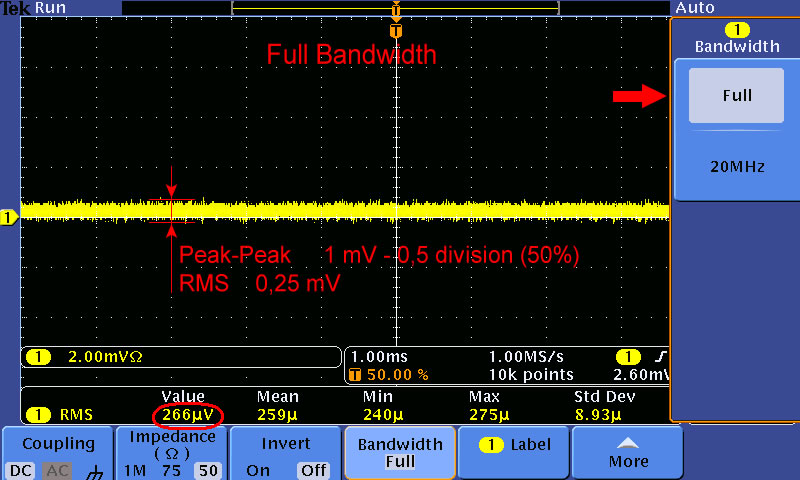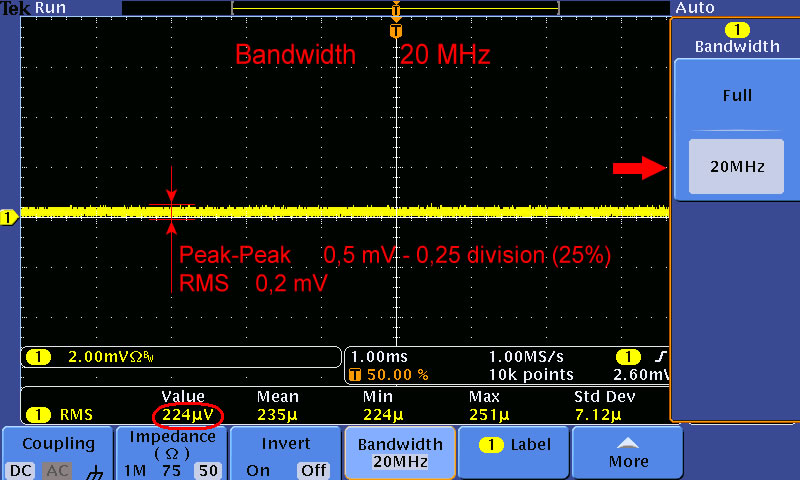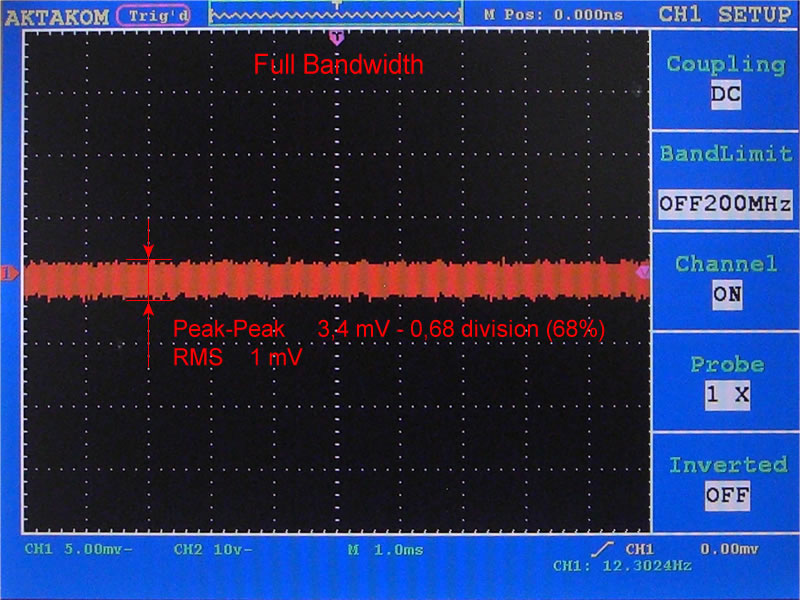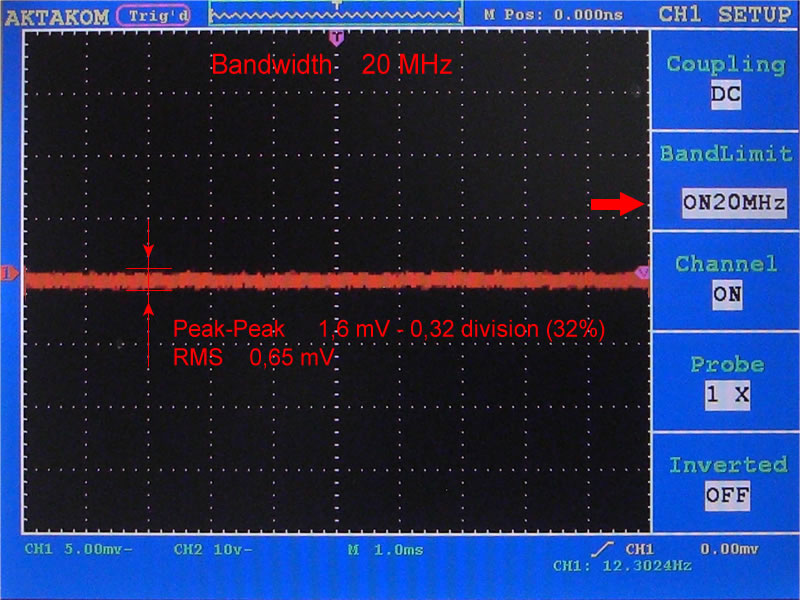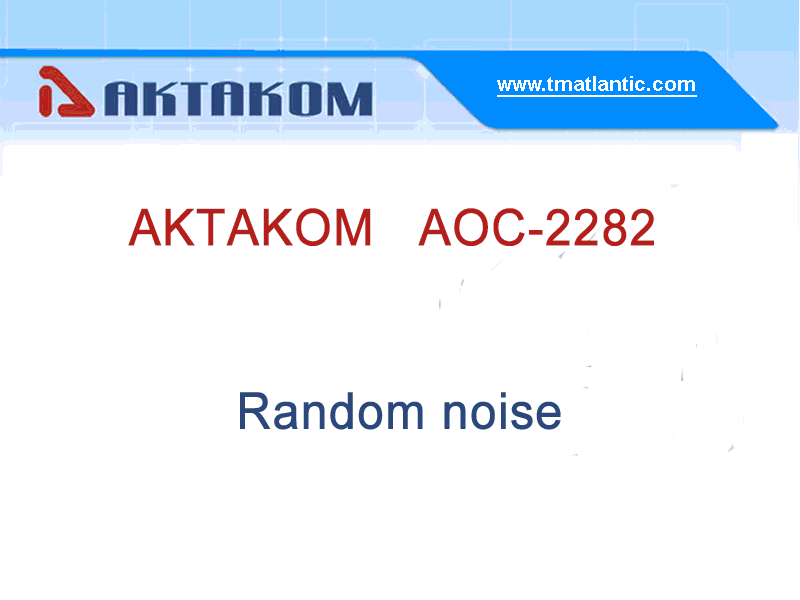| www.tmatlantic.com
Test & Soldering Equipment On-line Store |
|
D.E.V.I.C.E. (Wiki)Calculators Services |
|||||
Filter by first letter
|
Noise level (Random noise)All modern digital oscilloscopes regardless of the manufacturer have a significant noise level. The amplitude of the noise displayed on the screen of a digital oscilloscope (itself or the noise of the signal under measurement) depends on many factors including the sampling rate, signal brightness, persistence (inertia of the screen refreshing) and on the oscilloscope bandwidth as well. To assess the level of the random noise you may use, for example, the information from user manual for TEKTRONIX MSO/DPO3000 series oscilloscope. According to the table you may notice that for DPO3032 (300MHz) oscilloscope RMS of the random noise equals 148µV + 6% of the vertical scanning scale interval. Thus for one of the most sensitive range of this oscilloscope – 2mV/div, the value of the random noise composes the following: 140 µV+0,06*2mV=140µV+120µV = 260µV. It’s better to take into consideration that the peak value exceeds the current value (which, in contrast to RMS, can be easily measured by cursors when the eternal accumulation is on) approximately 6 times, i.e. the peak value equals 260µV *6=1,56mV. Thus when you choose the sensitivity of oscilloscope 2mV/div that makes 0.78 of the division. In fact if you switch on 300 MHz on the oscilloscope with the full band (with 50Ω load to ground) and switch the endless persistence mode of 2mV/div you will see noise level of 0.8 division. The same way can be used for the following example: if you switch on RF filter of 150MHz the level will be 200µV (80µV+120µV) RMS or 1.2 mV peak or 0.6 division. It should be noticed that oscilloscopes of other well-known manufacturers have comparable noise characteristics and show the similar noise level on the most sensitive scans.
In the pictures below there are noise level parameters for Tektronix PDO3012 shown at the full bandwidth (Pic.1) and at the bandwidth of 20 MHz (Pic.2):
Pic.1 Noise level at the full bandwidth
Pic.2 Noise level at the bandwidth of 20 MHz
As it was said above oscilloscopes of other well-known manufacturers have comparable noise characteristics and show the similar noise level on the most sensitive scans. As an example you can see the noise level parameters of Aktakom AOC-2282 benchtop oscilloscopes demonstrated in the pictures below (Pic.3 and Pic.4):
Pic.3 Noise level at the full bandwidth
Pic.4 Noise level at the bandwidth of 20 MHz
|
Measurement History Events
|
|||||||||||||||||||||||||||||||
Site mapPrivacy policyTerms of Use & Store PoliciesHow to BuyShippingPayment




|





















